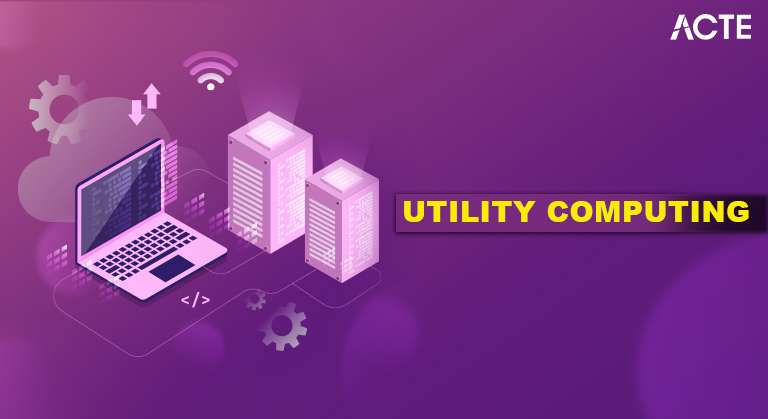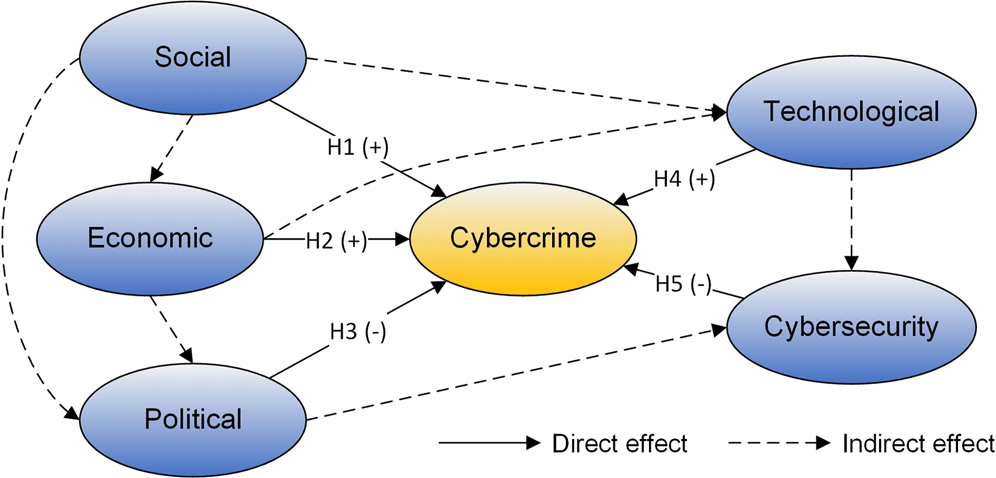
- Introduction to Utility Computing
- Utility Computing’s Advantages for Cloud Computing
- How Does Cloud Computing’s Utility Computing Operate?
- Some well-known examples of utility computing services include
- Best Practices for Utility Computing
- Cloud Computing vs. Utility Computing
- Conclusion
With utility computing, customers can purchase computer resources like processing power, storage, and bandwidth on a pay-per-use or pay-as-you-go basis. This concept eliminates the need for long-term investments in physical hardware by enabling enterprises to access computer resources and scale them up or down as needed.With utility computing, users simply pay for the electricity they use rather than making an upfront infrastructure investment. Cloud Computing Course essentially like an electricity bill. The emergence of cloud services has made this approach even more viable since cloud providers provide a variety of services that can be paid for according to real usage, providing businesses greater cost control, flexibility, and efficiency.
Enhance your knowledge in Cloud Computing. Join this Cloud Computing Online Course now.
Introduction to Utility Computing
Utility computing is a computing model that provides IT resources such as processing power, storage, and bandwidth on a pay-as-you-go basis. Similar to traditional utilities like electricity or water, users are charged based on their actual consumption rather than making upfront investments in physical infrastructure. This approach enables businesses to access scalable and flexible computing resources without the burden of managing and maintaining hardware. With the rise of cloud computing, utility computing has become a fundamental aspect of modern IT strategies. Cloud service providers like Understanding AWS Shared Responsibility Model, Microsoft Azure, Google Cloud Platform (GCP), and IBM Cloud offer computing resources through this model, allowing organizations to optimize costs and scale their operations efficiently.
Utility Computing’s Advantages for Cloud Computing
Utility computing is a desirable alternative for organizations due to its many benefits:
- Cost-Efficiency: By simply paying for what they consume, users can avoid making significant financial investments in infrastructure or hardware. This pay-as-you-go concept lowers overhead expenses for businesses.
- Scalability: Elastic computing resources are available from cloud providers and can be modified in response to demand. This guarantees that businesses can adjust their PAAS Solutions Effortless Cloud Computing.
- Flexibility: Applications, storage, and processing power are just a few of the many services available to organizations. Businesses can choose precisely what they need and adjust their consumption over time thanks to this flexibility.

- Reduced Maintenance Overhead: Utility computing relieves enterprises of the burden of managing data centers and maintaining hardware. By taking care of these duties, the cloud provider frees up resources for other important business objectives.
- Instant Access to Resources: By giving customers instant access to resources, utility computing enables companies to respond swiftly to shifting customer needs without having to wait for the deployment of physical infrastructure.
- Global Accessibility: Because cloud services are internet-based, customers can access computer resources from any location, which makes remote work and international operations easier.
- Amazon Web Services (AWS): EC2 (Elastic Compute Cloud) provides computational power, S3 (Simple Storage Service) provides storage, and RDS (Relational Database Service) provides databases, among other cloud services offered by AWS. Because these services are paid for based on utilization, AWS is one of the top platforms for utility computing.
- Microsoft Azure: Microsoft Azure Analysis offers a wide range of services, such as storage, AI tools, and virtual machines. Azure’s pay-as-you-go pricing structure makes it possible for businesses to effectively grow and manage their computer resources.
- Google Cloud Platform (GCP): Google Cloud offers computer resources for big data analytics, data storage, and machine learning. Because GCP uses a utility computing model, customers can only pay for the data transfer, processing power, and storage they really utilize.
- IBM Cloud: The utility computing model is also used by IBM Cloud, which charges based on consumption for resources including processing power, data storage, and AI services.
- Oracle Cloud: Oracle Cloud provides compute, storage, and database services with a flexible pay-as-you-go pricing model. It supports enterprises with high-performance computing and AI-driven analytics.
- Alibaba Cloud: Alibaba Cloud offers scalable cloud storage, computing power, and big data analytics solutions. Its utility computing model is widely used in Asia for cost-effective resource management.
- Salesforce Cloud: Salesforce Cloud provides customer relationship management (CRM) services, AI-driven insights, and cloud-based business applications using a subscription-based utility computing model.
- VMware Cloud: VMware Cloud delivers virtualized computing resources, hybrid cloud management, and enterprise storage with flexible, on-demand pricing, helping businesses optimize their IT infrastructure.
- Monitor Usage: To prevent overuse or underuse, resource use should be regularly monitored. To assist organizations in monitoring their consumption and minimizing expenses, numerous cloud providers provide dashboards or reporting tools.
- Optimize Resources: Make that the workload-appropriate computer resources are used. For instance, you can reduce resource waste by selecting the appropriate instance type.
- Set Budgets and Alerts: You may make sure you stay inside your intended spending range by setting up notifications and budget limitations. Tools for establishing consumption thresholds are frequently provided by cloud providers.
- Consider Security and Compliance: When using utility computing Microsoft Azure Analysis Services, be sure your apps and data are safe. Verify that cloud providers satisfy the security and legal compliance needs of your company.
- Evaluate Providers: Cloud service providers are not all created equal. Before choosing a supplier, it is important to consider their performance, capabilities, and cost structure.
- Implement Automation: Automating resource provisioning and scaling helps businesses optimize efficiency. Many cloud providers offer auto-scaling and workload management features to prevent overuse and reduce costs.
- Regularly Backup Data: To ensure business continuity, organizations should implement automated backups and disaster recovery plans. This protects critical data from accidental loss, cyber threats, or system failures.
- Optimize Network Performance: Efficient network management improves the performance of cloud-based applications. Businesses should use content delivery networks (CDNs), load balancing, and latency monitoring to enhance speed and reliability.
- Cloud Computing: The term describes the entire environment of computer resources that are accessible via the internet, including platforms (PaaS), software (SaaS), and infrastructure (IaaS). The concept of offering these resources on a pay-per-use basis is known as utility computing.Cloud computing provides on-demand access to computing resources, including servers, storage, Top Cloud Databases, and software, over the internet with scalable and flexible pricing models. It offers a broad range of services, such as Infrastructure as a Service (IaaS), Platform as a Service (PaaS), and Software as a Service (SaaS), enabling businesses to deploy and manage applications efficiently.
- Utility Computing: It is essentially a business model that falls within the larger umbrella of cloud computing. Utility computing concentrates on the pricing and scalability model, whereas cloud computing handles the delivery of computing resources.Utility computing, on the other hand, is a service-based model where computing resources, such as processing power and storage, are provided on a pay-per-use basis, similar to traditional utilities like electricity or water. It focuses primarily on metered usage, allowing users to access resources as needed without owning or maintaining infrastructure. While cloud computing encompasses utility computing as part of its pricing model, utility computing does not necessarily include the wide range of services and scalability offered by cloud computing.
Gain in-depth knowledge of Cloud Computing by joining this Cloud Computing Online Course now.
How Does Cloud Computing’s Utility Computing Operate?
The idea behind utility computing is to virtualize computer resources so they may be accessed online. Provisioning Resources Depending on their requirements, a cloud service provider assigns consumers access to computational resources including servers, storage, and networking. Pay-per-use Model The resources that users use determine how much they are charged. Cloud Computing Course Users will only be charged for the processing power, storage, or other resources they truly use thanks to this model. Scalability Without having to worry about capacity planning or hardware maintenance, users may quickly scale resources up or down to meet their present needs. Automation To guarantee the smooth and effective operation of the utility computing model, the majority of cloud providers automate the provisioning, scaling, and billing procedures. On-Demand Access Because resources are on-demand, consumers can access them whenever they want and without incurring any upfront fees or long-term commitments.The fundamental tenet of utility computing in cloud computing is to view computing as a utility, similar to water or electricity, that customers can use as needed and pay for according to usage.
Aspiring to lead in Cloud Computing? Enroll in ACTE’s Cloud Computing Master Program Training Course and start your path to success!
Some Well-known Examples of Utility Computing Services Include
Best Practices for Utility Computing
Despite the many advantages of utility computing, businesses should adhere to a few best practices to optimize its potential:

Want to ace your Cloud Computing interview? Read our blog on Cloud Computing Interview Questions and Answers now!
Cloud Computing Vs. Utility Computing
Although cloud computing includes utility computing, the two are not interchangeable. This is an analogy:
Conclusion
The way that companies access and manage computer resources has been completely transformed by utility computing. Pay-per-use models allow businesses to cut expenses while increasing flexibility and scalability. By enabling on-demand resource scaling, businesses can avoid the waste that comes with traditional IT infrastructure and only use what they require. Utility computing will continue to be a fundamental idea guiding the development of the digital economy as cloud computing advances. Cloud Computing Course utility computing, organizations can efficiently allocate resources based on demand, reducing operational overhead and eliminating the need for extensive hardware investments. Small businesses can leverage enterprise-grade infrastructure without significant capital expenditure, while large enterprises can optimize costs by dynamically adjusting their resource consumption. Additionally, utility computing enhances business continuity by providing access to reliable, redundant systems that minimize downtime. This model supports innovation by allowing companies to experiment with new applications and services without long-term commitments. Adopting utility computing in cloud computing offers substantial advantages in terms of cost control, flexibility, and resource efficiency, regardless of your company’s size, making it a crucial aspect of modern IT strategies.





